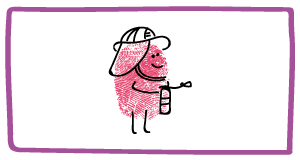Why is STEM Education So Important?

STEM training makes basic scholars, builds science literacy, and empowers the up and coming era of trend-setters. Our future is full of crazy inventions, from robots and virtual reality to driverless cars and drones. This trend is due, in part, to individuals with degrees in science, technology, engineering, and math, otherwise known as STEM majors. To find out more, we met with Shameema Parveen, CEO of Edutech and Christian Bseliss, STEM Invention Advisor - littleBits Prototype Development. They were pleased to answer some of our questions and gave us insider information into the education industry and we had a thought-provoking chat on all things STEM.
From STEM to STEAM to STREAM
STEM stands for science, technology, engineering, and mathematics and has been a part of our everyday lives in ways we may not even be aware of. STEAM is the same but with an addition of Arts which is what the ‘A’ stands for. STREAM is the most inclusive of the two and is being introduced soon. It stands for Science, Technology, Robotics, Engineering, Art & math, Christian tells us.
Shameema believes that STEM can easily become a cliché. It’s not just the terminology of robotics or 3D printing but much more than that. There is a big pedagogical shift in how teaching is carried out in classrooms of today thanks to STEM.
“We don’t want to get caught up with all the types of STEM and have come up with STEM + that has components such as Humanities, Design, Arts and Language Arts which is vital for the development of students today. I would like to emphasize the use of language and language arts as we are losing the aspect of reading, hence I feel it is important for a STEM program to provide you with the ability to communicate, read and write’’ she asserts.
Recruiters are looking for STEM capable skills that involves problem-solving, the ability to come up with ideas as well as having an “engineering or maker’s mind-set”. Engineering studies can be very theoretical in nature but we are now witnessing a shift in the courses being offered. Harvard for instance, has introduced courses combining Business and engineering and is quite practical in nature.
However, Christian points out that sometimes students are not taught the “Super Skills” for the 21st century knows as the 4C’S (Communication, Collaboration, Critical thinking and Creativity). These are needed for any project or courses starting early on in schools. For e.g. when coming up with a prototype to present to either the teacher or investors, students would not only know how to create but also work on their communication skills for a successful pitch.
While building their project, they would use critical skills as they would need to go back a few steps if they have any problems to rectify in their prototype - this is a Design thinking approach.
When asked how early STEM should be incorporated in the curriculum, Christian thinks the earlier the better as he recalls being taught about games in grade 3. In his experience the best way to do this to introduce STEM through gadgets and/or toys designed to teach programming with an extra element of fun. This seems to work well with students as they are fascinated and don’t realise that they are learning how to programme by playing around with what they might think are toys. This is why STEM stands above regular teaching as it draws the attention of students and stimulates a DIY mind-set (Do it yourself). When we encourage them to solve problems using their own skills instead of spoon feeding them, we enhance the creativity of the students to bring their ideas to life.
Who needs STEM?
The answer to this is that everyone does! Almost all careers today have components that back this up.
Science will always be a major part of the World—sun, moon and stars… grounds and seas… climate, catastrophic events, the assorted qualities of nature, creatures (expansive, little, microbial)… plants and sustenance… the fuel that warms our homes and powers transportation… The rundown is practically interminable. In this day and age, innovation implies PCs and cell phones, yet it backpedals to TV, radio, magnifying instruments, broadcast, telescopes, the compass, and even the principal wheel. Yes, building outlines structures, streets, and extensions, yet it additionally handles the present difficulties of transportation, an unnatural weather change and condition well disposed machines, apparatuses and frameworks.
We just need to glance around to perceive what enhancements to our lives and our homes have been designed in the most recent decade alone. We experience math at the supermarket, the bank, on tax documents, in managing speculations and the family spending plan. Each and every other STEM field relies upon mathematics. STEM is critical, on the grounds that it impacts each part of our lives.
How can teachers teach STEM?
Christian advises teachers to not be afraid or nervous as everyone starts somewhere and no one is born with STEM skills. There are plenty free sources and activities that teachers can do themselves in the classrooms. Regardless of the product, it is the way of teaching that matters and project based learning is quite effective in this case, where students are in the centre and teachers follow a DIY approach rather than an instructional one.
“When you create something with your own hands, you will not forget it. If I instruct you to do it, you will perhaps forget in a week’s time or so. The chocolate cake analogy that I spoke about at my TEDx Talk illustrates this; trying and failing several times until you learn how to bake a chocolate cake the right way will make you an expert at this task. This can be applied to any other task as well” he said.
It is how the teacher brings STEM into the classroom that will decide if it will fail or succeed.
There are countries doing a great job imparting STEM skills using sticks, cardboard rolls, paper and everyday loose materials available. If you look at the Montessori system –they use leaves, rocks and sand to teach. For e.g. rocks for teaching about shapes, sand to show porousness or how things stick together; kids tend to learn well from their everyday experience. Having to create projects enables an inquiry based and student centred approach which is guaranteed to bring in results.
Shameema opines that today’s tools will be outdated with new technologies pouring in hence it is vital to impart STEM-capable skills for students to be able to adapt to any tools of the future. Maybe you will need a Hyperloop transportation manger in Dubai or even a robotics doctor to fix the robots going forward. All we have to teach students is how to keep learning to be able to take forward their soft skills into the years to come.
Because STEM is so important for our children, our region and our country, we need to encourage the current generation, as well as future generations of students, to understand and embrace the technology that affects them every day of their lives. Students should be advised on the merits of taking as many math and science courses in middle and high school as possible. These courses need to be taught by engaged and enthusiastic teachers using hands-on and minds-on activities. Making science and math courses fun and interesting will not only help students to learn, but might also plant the “seed of interest” that could grow into an exciting and rewarding STEM career.
Shameema then concluded with a great quote, “All great inventors in the world have succeeded from never giving up - the ability to keep trying is what makes a good inventor”.
Got something great and educational to contribute? Share your ideas with us on Twitter, Facebook and Instagram or give us a live demonstration, and feature in the next issue of GESS Talks. Get in touch with Natasha Shetty natasha.shetty@fegroup.ae to find out more.


